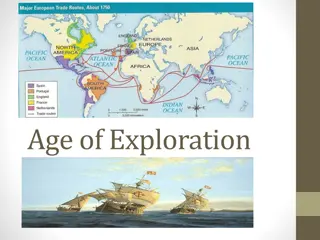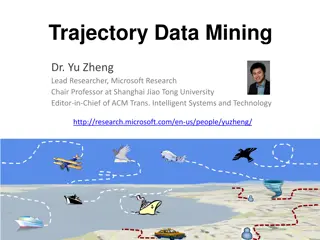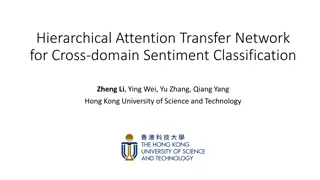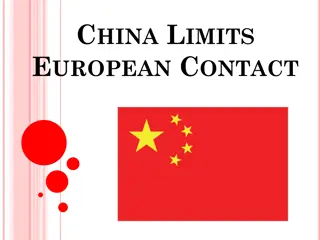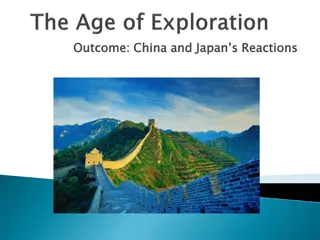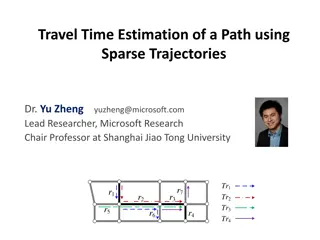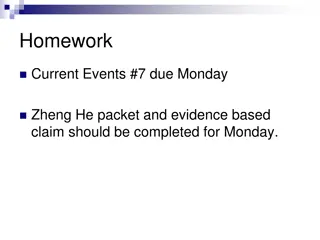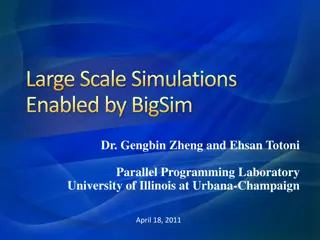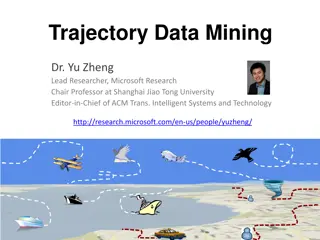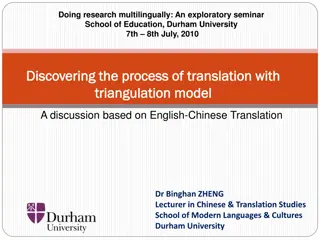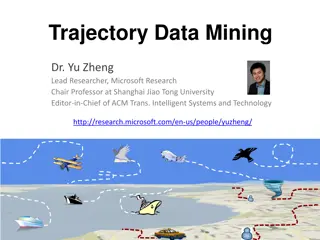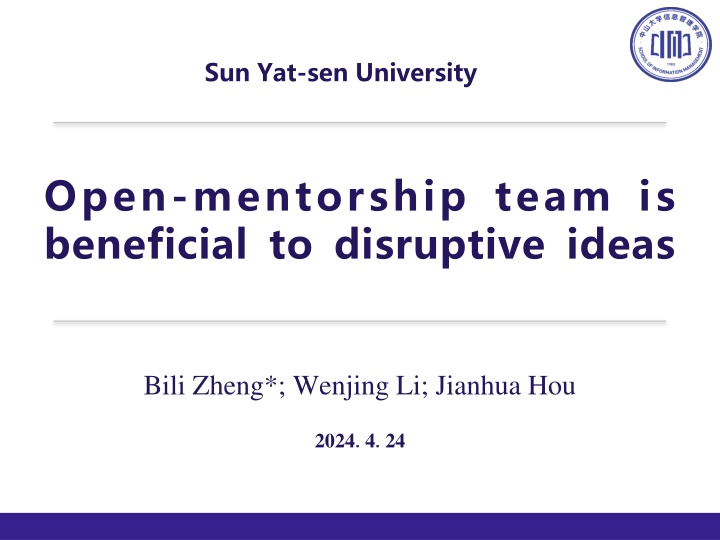
Beneficial Mentorship Teams for Disruptive Ideas at Sun Yat-sen University
Discover how mentorship teams at Sun Yat-sen University impact disruptive ideas in scientific research. Explore the dynamics of close-mentorship versus open-mentorship teams and their effects on generating innovative solutions. Learn about the study's methodology, data analysis, and implications for the future of scientific collaboration.
Download Presentation

Please find below an Image/Link to download the presentation.
The content on the website is provided AS IS for your information and personal use only. It may not be sold, licensed, or shared on other websites without obtaining consent from the author. If you encounter any issues during the download, it is possible that the publisher has removed the file from their server.
You are allowed to download the files provided on this website for personal or commercial use, subject to the condition that they are used lawfully. All files are the property of their respective owners.
The content on the website is provided AS IS for your information and personal use only. It may not be sold, licensed, or shared on other websites without obtaining consent from the author.
E N D
Presentation Transcript
Sun Yat-sen University Open-mentorship team is beneficial to disruptive ideas Bili Zheng*; Wenjing Li; Jianhua Hou 2024. .4. .24
1. Introduction In the past decades, scientific papers have become less disruptive. Some studies attribute this drastic change to the scientific enterprise, team size, and collaboration distance. Does a close-mentorship team fuses more disruptive ideas? On one hand, close mentorship has long been suspected to be damaging the advisee`s achievement, due to endogamy, immobility, disciplinary cohesion and educational administration. On the other hand, mentors, especially the elite ones, can provide mentees with more advantageous resources, a mechanism that Zuckerman calls advantage accumulation. Mentees who are under the wings of elite mentors are likely to show a more promising future than others 2
2. Definition Assumption: a close-mentorship team means all the members in a team belong to the same genealogy, while an open-mentorship team means the members belong to more than one genealogy. Mentorship can occur formally through doctoral and postdoctoral advisor advisee relationships or informally through collaborations. Some genealogy databases like The Academic Family Tree encompass both advisor-advisee relationships and broad range relationships which means the mentee may be the learner in mentoring relationships regardless of age or position. Here, we refer mentorship to as the advisor-advisee relationship. 3
3. Data and method We derive mentorship from the dataset released by Qing et al (2022), which enriches the Academic Family Tree by adding publication records from Microsoft Academic Graph (MAG) (Ke et al., 2022). Select the record with the research area including neuro from research.csv in Qing et al (2022). Construct academic genealogy based on the mentorship type. Graduate student, postdoc, and their mentors are treated as vertices. The edges are directed from mentors to graduate student and postdoc. For each vertex, we attach the attribute of MAG author ID. We obtain the Disruption index (DI) from SciSciNet. After excluding missing values, there were 361,189 papers, 82,814 authors, and 5,855 academic genealogies. 4
3. Data and method We adapt Propensity Score Matching (PSM) to validate causality between mentorship type and DI. The main effect of this study is the effect of the close-mentorship team on DI (treatment effect). Table 1. Variable description No 1 Variable treatment Variable type binary Annotation 1 if it is a close-mentorship team; 0 if it is open-mentorship team Disruption index (DI) Publication year Total citation counts 10thpercentile Z-score of the paper defined in Uzzi et al (2013) Team size of an article 1 if it is remote collaboration; 0 if it is not Average age of authors in a team Average productivity of authors in a team Average citation counts of authors in a team 2 3 4 5 outcome PY CI A10 continuous discrete discrete continuous 6 7 8 9 TS RC AA AP AC discrete binary continuous continuous discrete 10 Note: variables 2-5 are article-related factors; 6-7 are team-related factors; 8-10 are author-related factors. 5
3. Data and method Causal Forest (CF). In the causal forest, considering the analysis of heterogeneous causal effects, our estimation objective is Conditional Average Treatment Effects (CATE). The CATE for a given observation ? is defined as: W=1 Yi W=0 ? x = ? Yi Xi= x Eq.1 where i = 1,2, ,n represents the paper in our sample and Wi {0,1} indicates whether the team of paper ? is close-mentorship. We observe the outcome of interest Yi of paper is close-mentorship), otherwise we observe Yi paper`s other characteristics. W=1if the paper is assigned to the treatment condition (i.e., if the team W=0. Xidenote a vector of 6
4. Results Except for the correlation between A10 and Average age of authors in a team, the variables have significant correlations. the VIF factors of independent variables and control variables are below 3, which is below the threshold of 10. Table 2 Correlations matrix of outcome variable and control variable 1 1 -0.07*** 0*** 2 3 4 5 6 7 8 9 DI PY CI 1 - 0.08*** - 0.01*** 0.31*** 1 A10 0.04*** - 0.02*** 0.01*** 1 TS -0.02*** - 0.04*** - 0.02*** 0 1 RC -0.02*** 0.2*** 0.01*** 0.36*** 1 AA 0*** - 0.59*** 0.31*** 0.17*** - 0.21*** 0.08*** - 0.12*** 0.13*** 1 AP 0.01*** 0.05*** 0.01*** - 0.08*** 0.03*** 1 AC -0.01*** 0.16*** 0.2*** 0.01*** 0.01*** 0.07*** 0.77*** 1 7
4. Results The number of papers with open-mentorship teams far exceeds that with close-mentorship teams. It seems to see that the papers of the close-mentorship team have a slightly lower DI than the other group. 8
4. Results The results in the final model show that a close-mentorship team has a significantly negative effect on disruption. Specifically, the disruption of papers with close mentorship is 0.0006 lower than papers with open mentorship. (1) DI (2) DI (3) DI (4) DI (5) DI (6) DI (7) DI (8) DI (9) DI -0.00113*** (-15.65) -0.00113*** (-15.69) 0.0000280*** (17.03) -0.00105*** (-14.52) 0.0000262*** (15.87) -0.00000*** (-10.96) -0.00107*** (-14.85) 0.0000268*** (16.25) -0.000001*** (-10.52) 0.0000029*** (18.22) -0.00119*** (-16.12) 0.0000308*** (17.82) -0.000001*** (-10.05) 0.0000029*** (17.99) -0.000052*** (-7.69) -0.00119*** (-16.10) 0.0000316*** (18.17) -0.00000*** (-9.99) 0.0000029*** (18.00) -0.000044*** (-6.28) -0.000218*** (-4.10) -0.000783*** (-10.43) -0.000011*** (-4.74) -0.000000*** (-5.57) 0.000003*** (17.84) -0.000048*** (-6.89) -0.000191*** (-3.60) -0.000106*** (-29.12) -0.000803*** (-10.68) -0.000017*** (-7.09) -0.000000*** (-6.07) 0.0000029*** (17.80) -0.000048*** (-6.93) -0.000241*** (-4.52) -0.000109*** (-29.84) 0.0000028*** (8.81) -0.000618*** (-8.13) -0.000018*** (-7.59) -0.0000003* (-1.94) 0.0000029*** (17.93) -0.00005*** (-7.11) -0.000257*** (-4.82) -0.000106*** (-28.78) 0.0000088*** (17.68) -8.96e-08*** (-15.70) 0.0354*** (7.43) 361188 0.006 0.006 relationship PY CI A10 TS RC AA AP AC -0.00179*** (-86.84) 361188 0.001 0.001 -0.0579*** (-17.57) 361188 0.001 0.001 -0.0543*** (-16.39) 361188 0.002 0.002 -0.0555*** (-16.78) 361188 0.003 0.003 -0.0633*** (-18.29) 361188 0.003 0.003 -0.0649*** (-18.64) 361188 0.003 0.003 0.0210*** (4.61) 361188 0.005 0.005 0.0331*** (6.95) 361188 0.005 0.005 _cons N R2 adj. R2 9
4. Results After matching the two groups of samples, the distributions of PY, CI, A10, TS, RC, AA, AP, and AC are the same, which indicates matching is effective. Close-mentorship average of 0.002917 DI lower than the open-mentorship teams, which means that the DI of the close-mentorship team is 36.34% lower than the DI of the open-mentorship team. that the teams have an 10
4. Results For each paper, we obtain an individualized treatment effect with its 95% confidence interval estimated. The CATEs of the close-mentorship team have a mean of -0.0004. 11
5. Discussion The results are interesting since they seem to contradict views that claim collaborating with mentors, especially with elite scientists may have better research skills, which may fuse more disruptive ideas. In terms of the intellectual background of team members, members from different academic genealogies may have multidisciplinary intellectual backgrounds. Multidisciplinary collaboration integrates and reorganizes multiple knowledge systems. From the perspective of information cocoons, members in close-mentorship teams, choosing only topics of their interest and relying on a similar knowledge background, can easily become imprisoned in a self-constructed knowledge system, and the research may become procedural, stereotypical, and lose its innovation. 12
6. Conclusions We investigated the relationship between the variables by analyzing papers in Neuroscience and constructing regression models. The results indicate that the articles with the close-mentorship team are less disruptive than those with the open-mentorship team. However, we do not draw a deterministic conclusion that an open-mentorship team decides disruptive ideas, even though casual inference provides supportive results. Disciplinary difference exists in our findings. Given the data availability and computing, we only use DI to represent disruptive ideas. 13
Sun Yat-sen University Thanks for your attention Bili Zheng*; Wenjing Li; Jianhua Hou 2024. .4. .24

